Cotton crops make up around 50% of the world’s textile needs. You wear it without even thinking about it. Socks, shirts, caps, bed linen, baby clothes, trousers, shorts, gloves, tea cloths… the list goes on.
You probably wear or use cotton every day. But at what cost?
Discover the shocking reasons to avoid dirty cotton, and learn more about safer alternatives for you and your family…
Quiz: Is Your Body TOXIC? Take the Test...
(get your free personalized report)

Sure, everyday “dirty” cotton is comparatively cheap there and then – but what about long term? We’re not just talking about your long-term bank balance, but also the cost to the environment, your health, wildlife, and the health of the workers.
There are so many different factors in the argument against dirty cotton, and yet people just aren’t aware of the dangers.
Toxic Chemicals
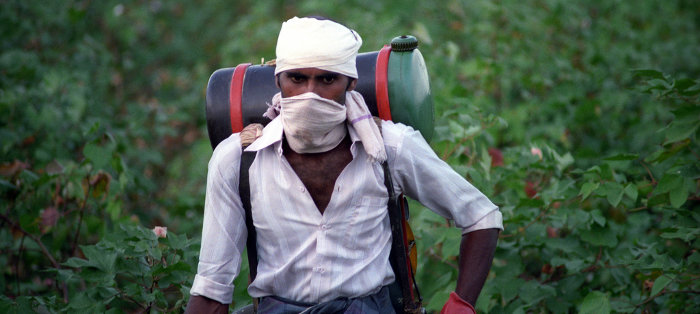
The Soil Association states that the non-organic cotton industry uses almost:
Quiz: Is Your Body TOXIC? Take the Test...
(personalized report)
- 25% of the world’s insecticides; and
- 10% of the world’s pesticides
In startling contrast, dirty cotton only grows on 2.5% of the world’s agricultural land, says the Rodale Institute.
Among these chemicals, there are a terrifying array of substances that are known carcinogens and others that were created as chemical weapons (like nerve gas).
Many cotton farms across the world – including the US – use chemicals like dioxin, aldicarb, and broad spectrum organophosphates; also with pesticides, before harvesting, lethal defoliants are applied to the crops, causing further harm.
Remember, this is just during the growth phase; more chemicals, which we’ll look at a little later, are used during the processing and production phase.
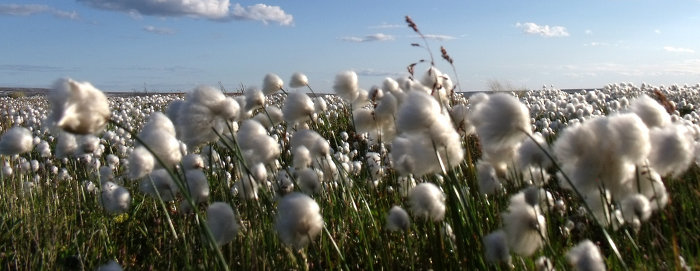
The pests that these chemical agents are meant to protect against eventually build up tolerance, so farms use larger, stronger, more concentrated doses in an attempt to control the pests.
While one of your most immediate concerns is what this means for you and your health, the use of these chemicals is devastating to the environment and to the people forced to live and work in or around dirty cotton farms.
The danger isn’t just confined to the immediate area, either. Cotton crops are dusted with chemicals via planes. So, the wind carries a great deal of the contaminants to surrounding areas, contaminating other crops, bodies of water, homes, and wilderness.
Human Dangers
Although it’s impossible to get exact figures regarding illnesses and deaths as a result of pesticide and fertilizer use in cotton growers, because of a lack of standardized care and reporting, the World Health Organization and the Pesticide Action Network estimate that up to 40,000 people die each year from pesticide poisoning.
The health hazards caused by the chemicals used to grow dirty cotton include cancers, poisoning, respiratory distress, weakened immune system & even death.
Environmental Impact
The chemicals used in cotton growth leach into the soil and the water table, devastating whole ecosystems.
Whole swathes of land become unusable because of the toxicity of the chemicals sitting in the soil. Water sources around the cotton farms become lethal yet, in many countries, this water doesn’t undergo sufficient treatment, and local people are forced to drink it. Aquatic ecosystems are wiped out as the pH levels dramatically change and toxicity levels increase.
The chemicals don’t discriminate. They don’t just kill insects – they kill birds and animals, too, killing millions of harmless (and beneficial) creatures each year.
Water Use
It’s not just the chemicals, either. Cotton is thirsty as well as dirty, and farmers who grow dirty cotton tend not to employ proper water management. Poor water management is draining rivers and lakes and draining underground water reserves, causing irreversible damage for generations to come and creating countless acres of barren wasteland.
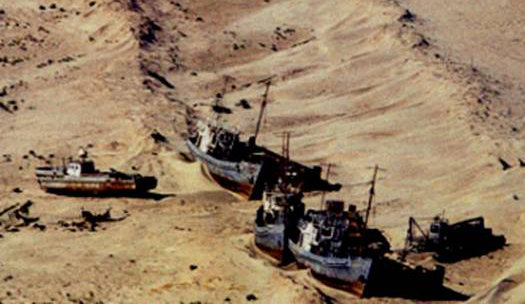
The Aral Sea (pictured above) is now a barren desert thanks to bad water management and over-production of dirty cotton. A prime example of the devastating impact of humanity on our fragile world.
Dirty Cotton Processing

If you’re not that concerned by the environmental impact, you might think dirty cotton is safe after processing because surely all the chemicals are removed, right? Wrong.
Firstly, however much processing the cotton undergoes, traces of those toxins remain in the finished product. And, of course, given how thoughtlessly cotton is grown, you didn’t think more care would be taken with the processing, did you?
The processing is just as harmful to the environment as the growth phase. Waste water filled with chemicals is dumped straight into water sources, and so destroys aquatic ecosystems and pollutes the water table.
Complaints related to cotton processing are similar to those caused by chemical use during crop growth, including respiratory distress, birth defects, weak immune systems, and even death.
Here’s a few of the chemicals used in the growth and production of dirty cotton, and the dangers they pose:
| Chemical | Dangers | Source |
| Arsenic | Carcinogen. Muscle weakness. Irregular heartbeat. Liver and kidney damage. Weak immune system. | American Cancer Society |
| Mercury | Neurological damage, birth defects, tremors, nerve damage, reduced cognitive function, respiratory failure. | US Environmental Protection Agency |
| Formaldehyde | Carcinogen. Potentially lethal respiratory distress. | National Cancer Institute |
| Benzedine | Carcinogen. Bladder injury. | US Environmental Protection Agency |
| Aldicarb | Attacks central nervous system. Severe respiratory distress. Epigastric cramping. Tremors. | International Programme on Chemical Safety |
| Parathion | Attacks central nervous system. Severe respiratory distress. Seizures. Blood disorders. Paralysis. Coma. Liver failure. Probable carcinogen. | US Environmental Protection Agency |
The residues from these chemicals could contaminate your body, your family, and your home… fortunately, there is an alternative.
The Answer: Organic Cotton
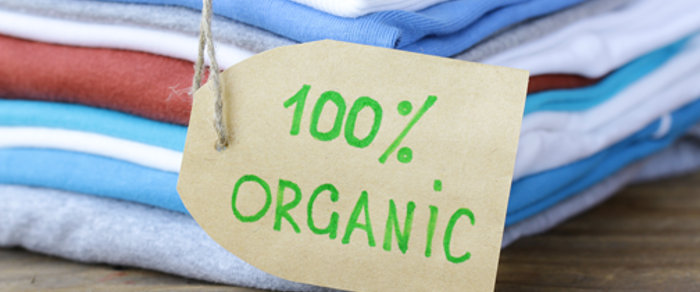
Organic cotton is grown and processed using traditional methods, without the use of any chemicals. Organic cotton producers practice crop rotation to conserve water and nutrients and use proper water management techniques.
To help prevent pests, they use regular tillage, plant and harvest according to pest life cycles, and use companion planting. To maximize their yield, organic farmers use organic fertilizers. Processing is also chemical-free and, if any dyes are used, they are natural dyes from plant extracts.
So, if organic cotton has no detrimental health effects and no negative impacts on the environment, why does dirty cotton still exist?
Because organic cotton yields less per acre than dirty cotton and, in spite of the devastating consequences, dirty cotton is more immediately profitable.
How Can You Help?
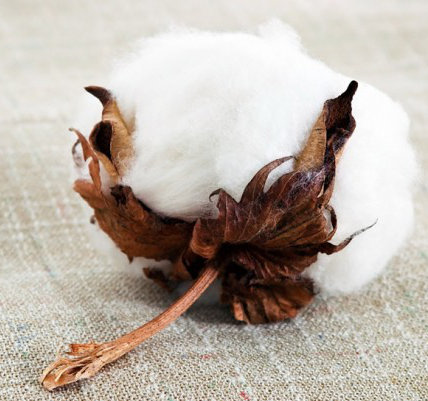 Opt for organic cotton. As demand for 100% organic cotton increases, the less demand there is for dirty cotton, so dirty cotton becomes less profitable, and more farmers can opt for sustainable, organic practices.
Opt for organic cotton. As demand for 100% organic cotton increases, the less demand there is for dirty cotton, so dirty cotton becomes less profitable, and more farmers can opt for sustainable, organic practices.
By only buying organic cotton, you protect the health of your family, improve the lives and health of farm workers, and protect the environment. Organic cotton isn’t available in as many bright, garish colors and prints, but is a bilious green cotton shirt worth the health risks?
Organic cotton is better for everyone – but it is a particularly crucial choice for those who suffer from respiratory conditions, like asthma, as the chemical traces in dirty cotton have a significant detrimental respiratory impact. The same applies for those who suffer from allergies and skin irritations.
Precautions:
Remember, not everything labelled as “organic” truly is.
- “Organically grown”, “all natural”, or “grown according to organic principles” means that although the cotton plants had no chemicals applied while growing, they were grown on land containing toxic residues and likely underwent chemical processing during production.
- Look for “100% organic cotton” or “100%-certified organic cotton.”
http://healthychild.org/easy-steps/choose-organic-cotton-for-cleaner-eco-friendly-clothing/
http://www.cottonedon.org/
http://www.treehugger.com/sustainable-fashion/organic-cotton-for-clothing-baby-bedding-and-more.html
http://peopleandplanet.org/redressfashion/briefing/dirty
http://www.organiccotton.org/oc/Cotton-general/Impact-of-cotton/Risk-of-cotton-farming.php
http://www.ncbi.nlm.nih.gov/pubmed/2610523
http://www.organiccotton.org/oc/Cotton-general/Impact-of-cotton/Risk-of-cotton-processing.php
